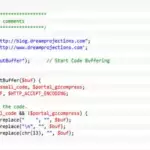Question: Which of the following options correctly represents the degrees of comparison in the English language?
- Big – Bigger – Biggest
- Good – Well – Best
- Fast – Fastest – Faste
- Happy – Happest – Happier
Answer: A) Big – Bigger – Biggest
Degrees of Comparison Solution:
Degrees of comparison in the English language are used to compare the attributes of nouns, adjectives, or adverbs. They help us express differences in size, quality, or quantity. The correct sequence for degrees of comparison for the adjective “big” is as follows:
- Positive degree: Big
- Comparative degree: Bigger
- Superlative degree: Biggest
- Option A) “Big – Bigger – Biggest” is the correct representation of the degrees of comparison for the adjective “big.”
- Option B) “Good – Well – Best” is incorrect because “well” is an adverb, and the correct comparative form of “good” is “better.”
- Option C) “Fast – Fastest – Faste” contains a spelling error in the superlative degree (“Faste” should be “Fastest”).
- Option D) “Happy – Happest – Happier” contains spelling errors in both the comparative and superlative degrees (“Happest” should be “Happier,” and “Happier” should be “Happiest”).
In summary, option A) represents the correct degrees of comparison for the adjective “big.”
Brief solution:
The comparative degree of an adjective is used to compare two things. In this case, we are comparing the intelligence of two people. The sentence is asking which person is smarter. The answer is smarter because it is the comparative form of the adjective smart.
Here are some other examples of comparative adjectives:
- tall – taller
- short – shorter
- fast – faster
- slow – slower
- big – bigger
- small – smaller
Please visit us to learn more about more Questions and Information.




